This second part looks at operating the AHC12-600 Electric 12V DC Heater
Part 2 – Operation of the Heater
Recap
The Ablemail AHC12-600 is a 600W 12V Electric Heater with Bluetooth Connectivity.
The AHC DC Heater is an Electric Heater just like the AC Heaters you might plug into a regular wall socket, but the key difference being, of course, you don’t need an AC Supply – so no Inverter required! No inverter means no extra hardware required and a reduction in power consumption as you don’t have the inverter overhead to factor in. And being electric means a much simplified installation with no deadly fumes to ensure are routed externally, combustable fuel to route or servicing requirements (as a comparison, compare the simplicity of installing & running a 12V Compressor Fridge in a Motorhome compared to a 3-Way LPG (Propane) Absorption Fridge).
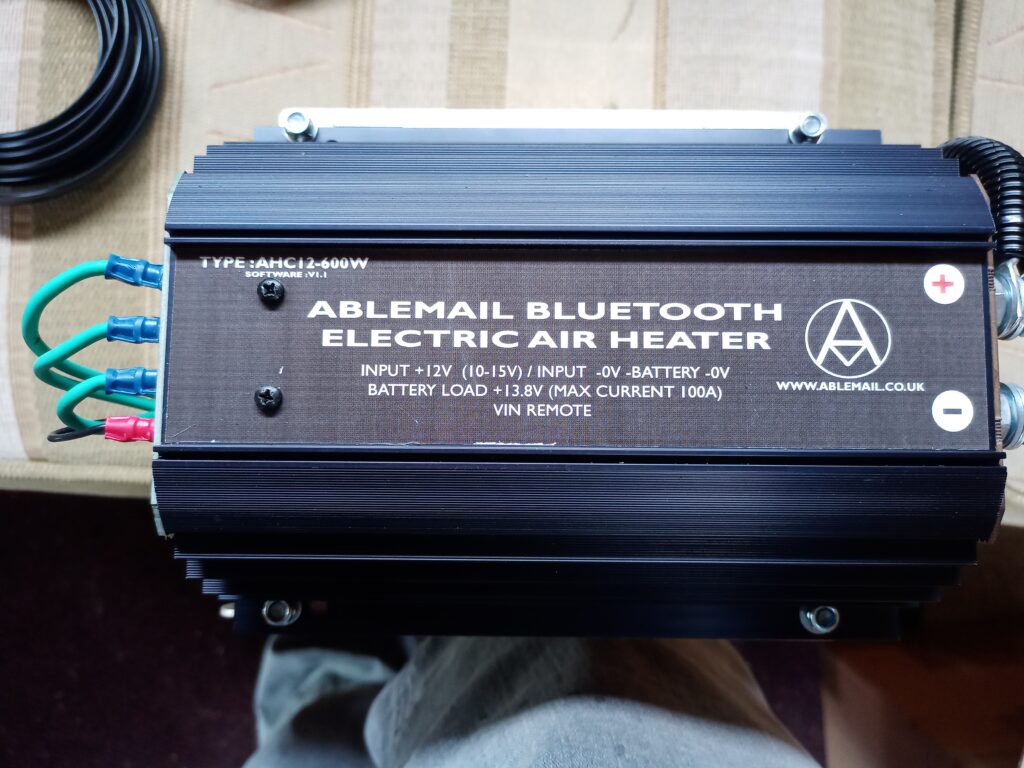
Using the Heater
There are two ways to control the heater. One is the physical control panel and the other is using a Smartphone App
Control Panel
Direct via Physical Controller
There is an LED on the control, which is green when the Heater is running and active, off when the heater is turned off, and red if there is a error condition.
The first is the ‘old-school’ way via the control panel, that is very straightforward to use, comprising of a rotary dial that also incorporates the OFF switch. The dial is a typical traditional controller where the position of the dial determines the target temperature desires.
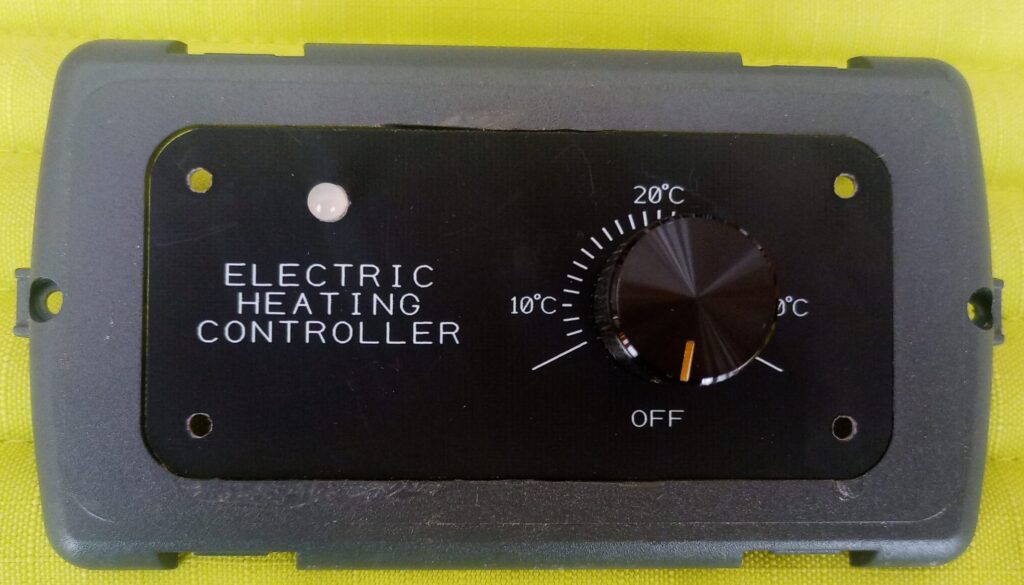
Monitoring & Control via the Smartphone App
To do this you connect to the heater via the Connections Page in the App and select the appropriate Bluetooth Module (if you have more than one Ablemail device, you may see multiple Bluetooth Modules listed).
In my setup, I have 3 ABB07 Modules, and the x401 one is the one for the heater. The red ‘x’ means it is connected. Before connection, available devices have green ticks in circles.
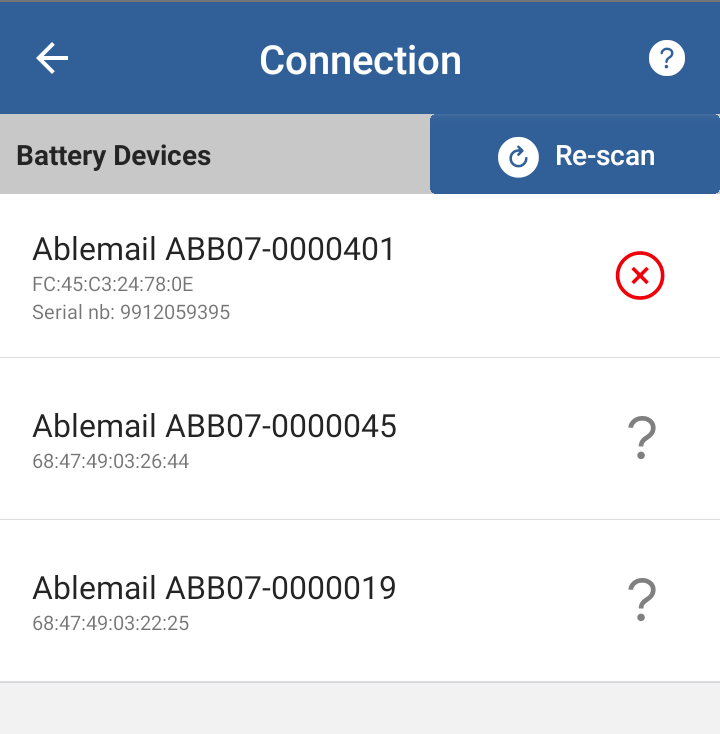
Rather than using the physical Control Panel, the second way to control the heater is in conjunction with a Smartphone App (available on both iPhone and Android devices) via the integrated Bluetooth within the Ablemail AHC Heater.
Once connected successfully, the Top band changes colour to Blue and the App is ready to be used with the device.
Monitoring the Heater via The Smartphone App
Once you are connected, you can select the Manager Page and see an overview of the heater
Note: Currently in these Screenshots, there are references to items like “Battery Manager” and later you will see “Charger Settings” for example. This is an overhang of the App initially developed for the Ablemail AMC DC-DC Battery Charger. It has been further developed for additional Ablemail devices, such as this heater, but the terminology used has not yet been updated.
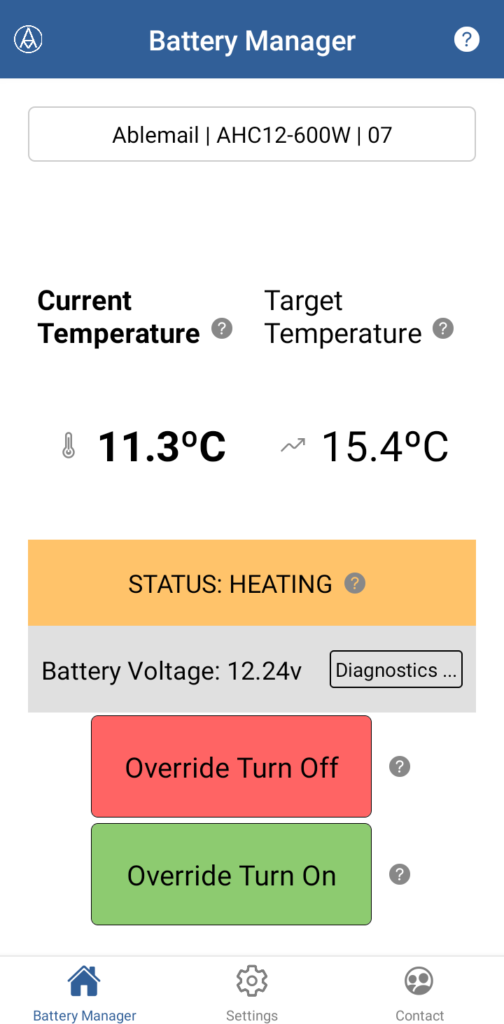
Here we see the App tells us the current room temperature (provided by the remote temperature sensor installed on the heater) and the Target Temperature (that comes from the position of the rotary dial on the control panel).
Below that it tells you what the Heater is doing – in this case it is currently in ‘HEATING’ mode.
Then you are informed about the Battery Voltage. As this heater runs off the Battery and is quite a high load on the battery, information about the battery is important.
And then below that block, you have two buttons – a Red “Override Off” one and a Green “Override On” one. When you tap on the Override Turn On button, you get a selection of options, which we will cover shortly.
So a simple but useful set of monitoring items. At this point, we are just monitoring the heater based on the Dial control, but by using the Override can control it
The next couple of Screenshots show some other status views of the App manager depending on the current function of the Heater.
This first one shows the heater is enabled, but the Target Temperature is lower than the current Temperature, so no Heating is required.
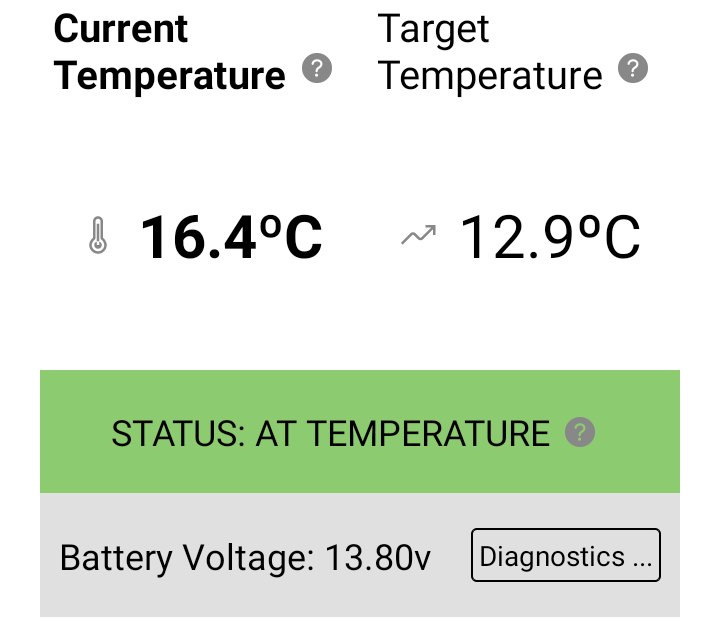
And in this next one, the heater is turned off (hence why the Target Temperature is at 0.0C).
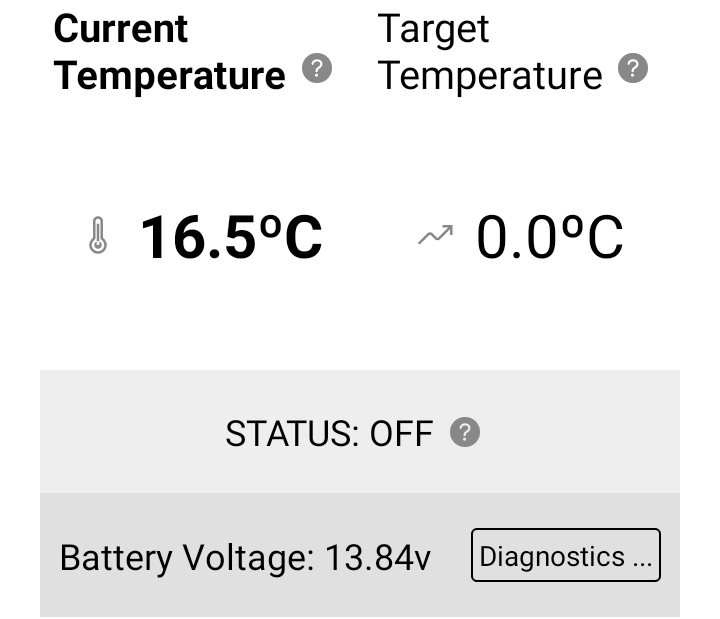
Controlling the Heater via the Smartphone App
The first step to taking over control of the Heater via the App is to enter the Override Function by tapping the Green Button
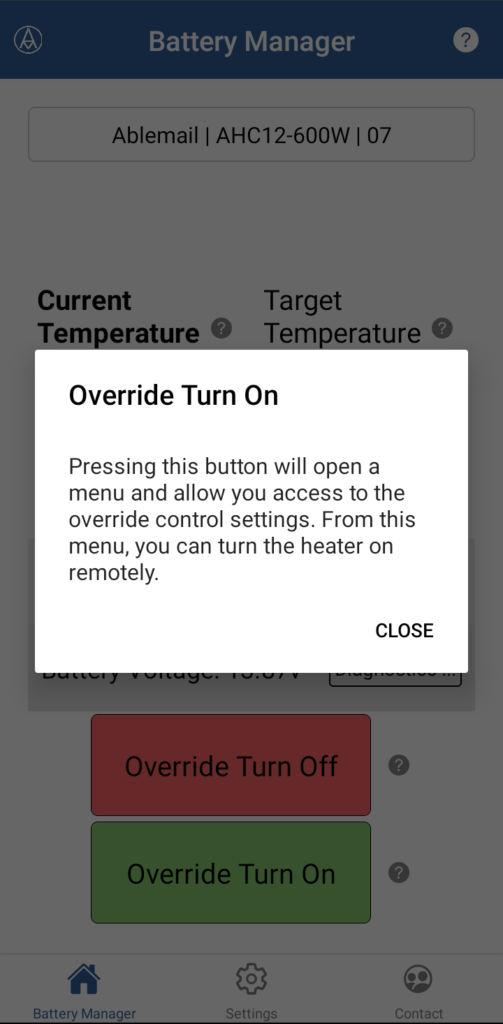
The screenshot to the right/below shows the 4 available override options
OVERRIDE CONTROL
- Override Temperature:
This becomes the New Target Temperature, overriding the setting from the Rotary Dial on the heaters Control Panel - Override Time:
This sets the duration of the Override, after which time the Heater reverts to the Control Panel settings - Fan Mode:
This Mode allows the heater to be used for cooling i.e. Fan running but no heating elements turned on - Night Mode:
The Night Mode will reduce the fan speed and reduce the heater to using a single active heating element
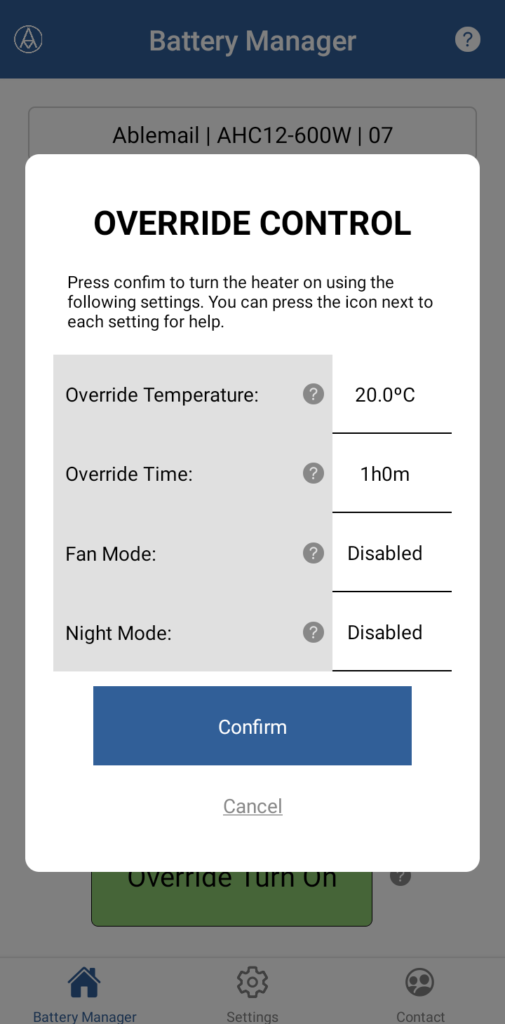
Tapping each of the settings allows you to change the settings of each of the fields. For example below you see the Override Time Entry.
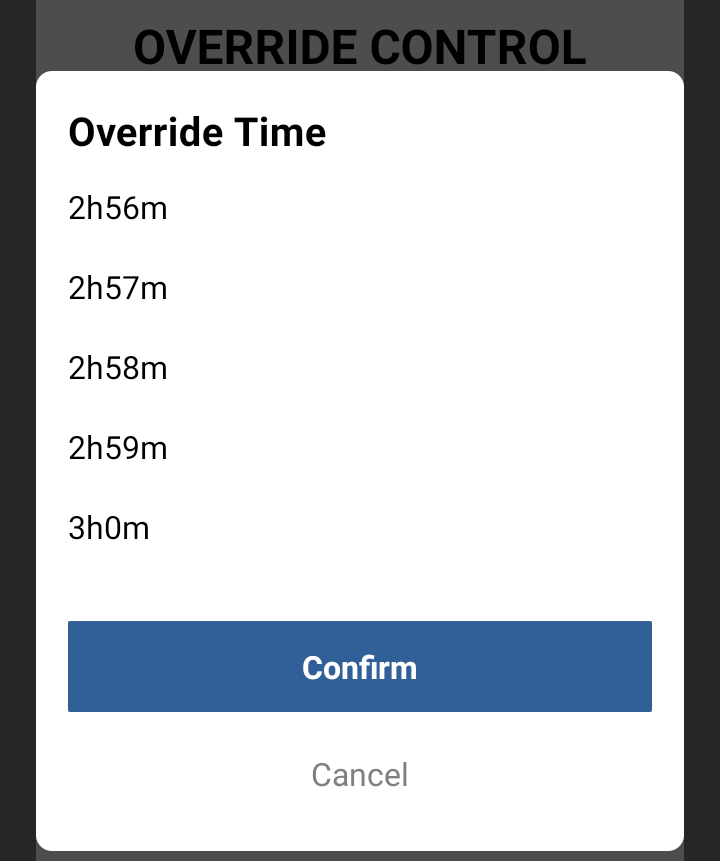
If the override was no longer needed, the it is simply a matter of clicking the Red “Override Turn Off” button on the Manager Screen.
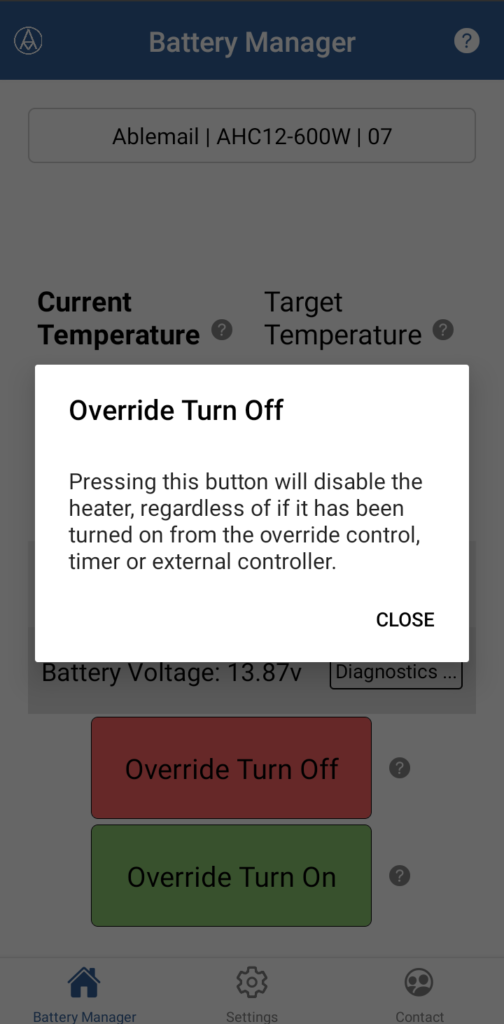
This complete how to use the App to Control the AHC Heater remotely via the Smartphone App.
The next section will discuss the configuration options for the heater. Note that some of these settings may not be applicable to this pre-production model and so I will possibly not bring them up at this time.
Configuring the Heater via the Smartphone App
There are two key pages for configuration data.
The key one to make any changes to the Heater is the Settings Page (here called the “Charger Settings” in this current version of the App).
Charger Settings
- Device Name:
You can change the name to your own preference if you want. Useful if you have more than one of the same device model - Ignition Control: Not used on the unit I have
- Frost Heater Temperature:
This works in conjunction with the Frost Heater Enable setting. You select what temperature you want the heater to come it should the room temperature drop below that setting - Battery Guard Threshold:
This is the voltage under which the heater should turn off in order to avoid the supply battery discharging too far. It is worth mentioning that under load, battery voltages sag and there is also a voltage drop through a cable, so the value set here is not neccessarily what the battery will be, so the appropriate value to set will depend on each individual installation - Battery Guard Timer:
This works in conjunction with the Guard Threshold to control the heaters on/off operation. - Heater Control Steps:
This determines the behaviour of the heater elements as the target temp is approached. - Fan Run On Time:
The fan will run on this time after the heating element turns off in order to cool in. Not a setting to be typically changed - Low Power Enable:
When disabled, the Bluetooth interface stays on when the heater is off (leave disabled for ease of use) - Frost Heater Enable:
This determines if the heater starts itself up at low temp (as set by the Frost Heater Temp). Enable if you want to reduce the interior from risk of freezing.
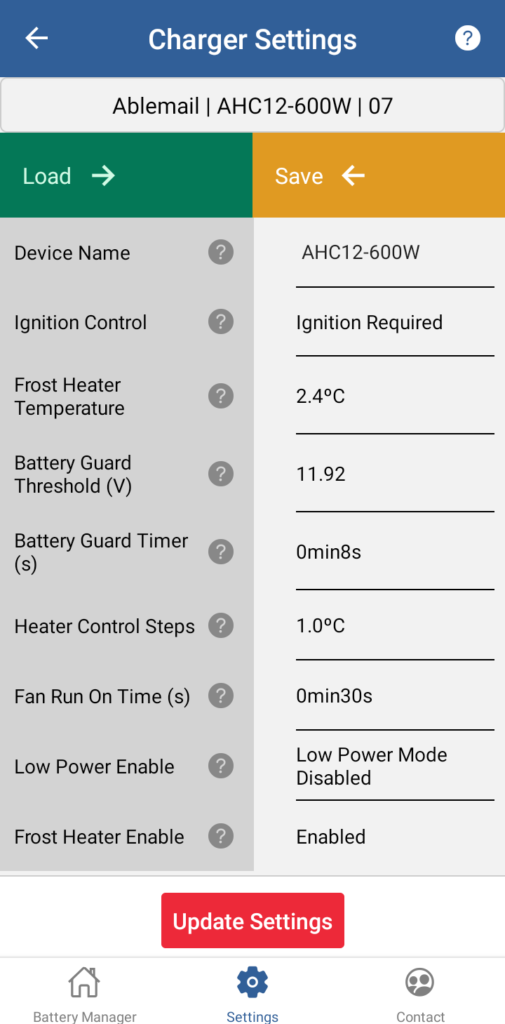
There is a similar page which can be accessed to read all the current information help by the heater. This is not a generally used page but might be one used for any troubleshooting or find-tuning of the settings.
It also includes data such as any override time left remaining.
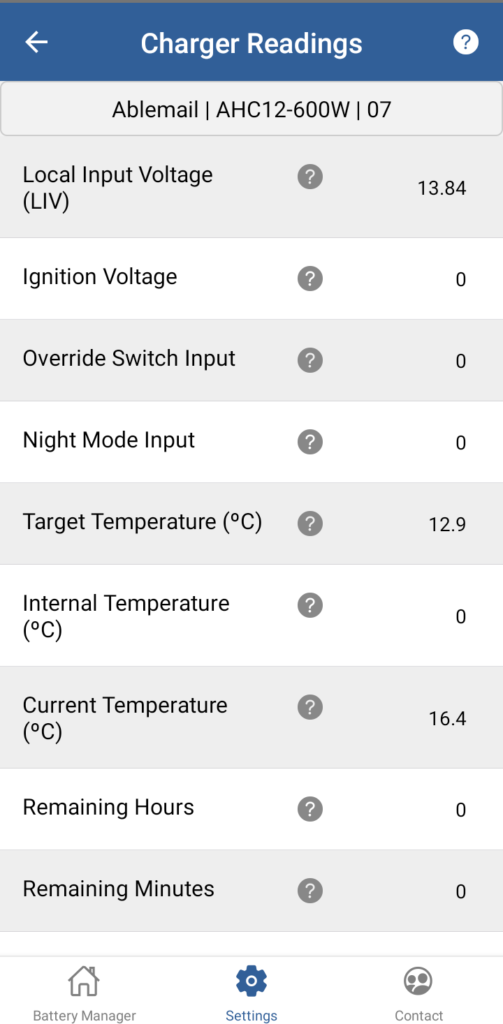
This screenshot is the final one of the set from the Ablemail SmartPhone App and it shows the various available pages within the ‘Settings’ option.
The various screens show previously will have been accessed via this option list.
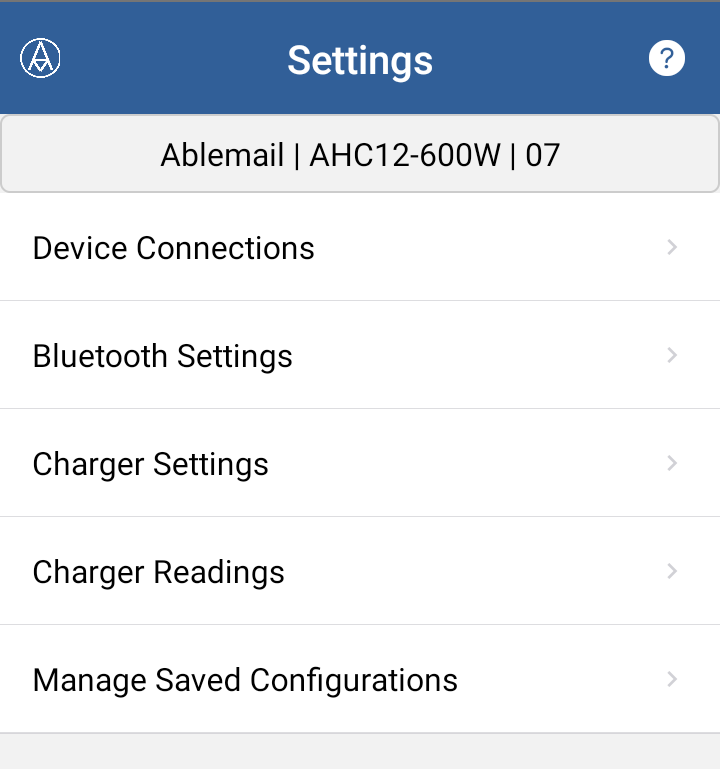
Conclusion
This completes the information how to use the AHC Heater manually and also how to use, monitor and configure the heater via the App.
The Heater is a 600Watt unit in regular mode (dropping to 200W in Night Mode) and so is a fairly high load on the battery system, and as such the user needs to do their own calculations on what would be suitable and substainable running times for their own installation.
My own conclusion would be the heater of this output works well at ‘taking the edge’ off a cold room/space but relying on a battery heater alone for prolonged periods without power assistance from AC input or an Alternator to provide some charge/power may not be possible and if off-grid heat is needed for extended times, then this would be a good supplementary option. And note, being a 12V DC Heater will reduce the overhead of using an Inverter, so will give improved efficiency over a 240V AC Heater.
